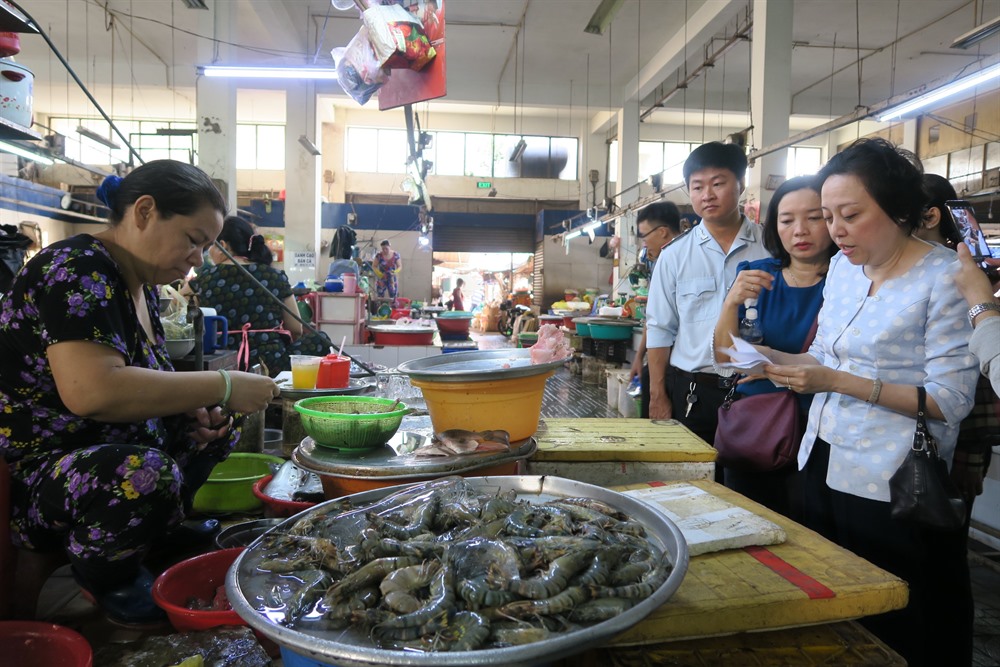 Society
Society

An inspection team on Thursday led by Phạm Khánh Phong Lan, the head of HCM City’s Food Safety Management Board, visited a safe-food market pilot model at Phú Lâm Market in District 6.
 |
| An inspection team checks a food-safe pilot model at Phú Lâm Market in HCM City’s District 6. — VNA/VNS Photo Đinh Hằng |
HCM CITY — An inspection team on Thursday led by Phạm Khánh Phong Lan, head of HCM City’s Food Safety Management Board, visited a safe-food market pilot model at Phú Lâm Market in District 6.
The inspection team, which checked fresh products such as pork, shrimp, fish and crab, also asked small businesses to provide receipts and records of origin for their products.
Lan said that violators would be fined to ensure that markets comply with food safety requirements.
“People should not assume that only goods in supermarkets are safe and goods in traditional markets are not safe or hygienic,” she said.
She also asked veterinarians to take random samples of pork products to test for pesticide residue.
Phú Lâm traditional market was chosen as the first market to pilot the model in District 6.
To be recognised as a safe-food market, the market must meet requirements on sanitation and facility conditions, show responsibility and knowledge about hygiene and food safety, and ensure that origin of goods can be traced.
The market currently has 410 stalls with 242 of them operating.
The district has upgraded the market’s facilities and organised food-safety courses for small businesses.
The market’s management board regularly checks and reminds small businesses to strictly follow food safety and environmental protection regulations.
Nguyễn Thái Hằng, a pork seller at the market, said that some companies had recently asked her to supply proof of quarantine licence and origin. “These requirements are legitimate rights that ensure hygiene and food safety,” she said.
Many small traders of seafood products said that the traditional markets had suffered unfairly because of the illegal practices of many small unregulated businesses.
Lan asked the management board should coordinate with the locality to clear these unregulated businesses and call on people to boycott their food. “These shops offer unsafe food with no proof of origin,” she said.
HCM City now has about 239 traditional markets, 207 supermarkets, 43 commercial centres and 1,100 convenience stores. However, most people continue to buy food at traditional markets.
Meanwhile, awareness about food safety among sellers and buyers at traditional markets remains limited.
To better serve consumer demand, as well as ensure safety and consumer rights, the food-safe model is expected to be expanded to all markets in the city.
The Food Safety Management Board has asked all districts to set up at least one food-safe model in each district.
Last year, Hóc Môn Wholesale Market in Hóc Môn District and Bến thành Market in District 1 were the first two districts to pilot a safe-food market model in the city. — VNS




